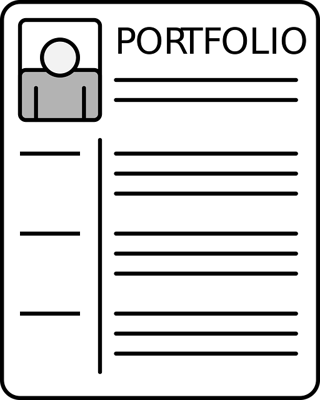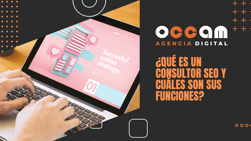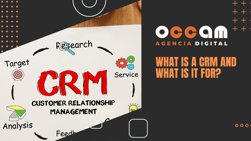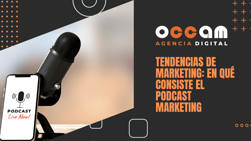Index Content
Portfolios are still a key issue in today's companies, but they have now been digitised, which can be an advantage if done correctly.
what is a portfolio?
A portfolio is a collection of documents or work that a company has done throughout its career and which is presented in a variety of creative ways in digital format, i.e. it is a total expression of the work and professional brand.
It should include a description of the history of the business, the short, medium and long term objectives of the company, the vision of the company, the products and services it has and those it plans to acquire in the near future, the quality seals and guarantees, the suppliers, the company's endorsements, partners, collaborators, etc. Likewise, the key question to focus a portfolio correctly is to know who you are addressing and what you want to communicate. With this question in mind, you will also be able to correctly select the work you want to add.
Top 3 reasons why a portfolio is important
- Back up your experience: Adding examples of previous work is a concrete way to endorse your experience in the field, and the portfolio will be a key reference before making decisions.
- Talk about your work: "A picture is worth a thousand words" applies perfectly in this case.
- It is a personal marketing tool. The portfolio gives the client a much clearer idea of the way you work. Through the portfolio you promote yourself and sell your work and your skills, so it is very important that you analyse what to add.
![]()
how to improve my portfolio and make it impactful?
- Define the objective of your portfolio. The first thing to think about is what you want to achieve with it, be it work, clients, strengthening your brand... Depending on your objectives you will realise that the design of your portfolio can take many different forms.
- Define your target audience. Your portfolio should speak to the target audience you are addressing. Likewise, when you have defined from the beginning where your portfolio is going to be addressed, it is much easier to work on the graphic line and the story it will follow.
- Show quality, rather than quantity. It is important that you show only the most important works and those that best define your personal brand.
- Include a brief presentation and make your contact details visible. Include a brief presentation about yourself and your work at the beginning of your portfolio that defines your project, career or personal brand. And of course, don't forget to include contact details at the end of your portfolio.
- Update your portfolio regularly. Just like a good CV, your portfolio should also be updated regularly. You should update it both in content, adding your new work or contact methods, and in design and format. Technology advances, and your portfolio should be in constant transformation to show recruiters or clients that you are keeping up to date in the market.
what tools are available to create an online portfolio?
- WordPress: With this tool you have total freedom to design and customise your portfolio with almost no limitations, and you can tell in great detail the whole process of creation or add infinite information, images, videos and much more.
- Froont: If what you are looking for is to be able to design a portfolio without too much knowledge in code, which allows you to have a freer and not so limited design, Froont can be a great option for you.
- Dribbbel: Dribbbel is a huge platform created to show our portfolios, creative works and illustrations made by users.
- Behance is a product developed by Adobe, which together with Dribbble, has become one of the most common and popular ways to present portfolios. It is mainly focused on creatives, fashion designers, professional photographers and advertisers.
- DevianArt: Another of the best spaces for artists on the web and here, as on Behance, you can share a site with professionals as well as amateurs who are starting out in the world of drawing, illustration or even advertising.
- Domestika is a free web platform specialising in the creative market of the digital age.

- Dunked is a platform and community for creative minds, distinguished by its simplicity and speed when creating your portfolio, but with the advantage of being able to add CSS to customise your designs even more.
- Cargo is a very intuitive platform, simple and with very good results. You can choose from several templates or themes and customise them if you want through CSS code.
- Wix: This option is not very recommendable, as the free version of these sites usually includes large amounts of advertising and is not something that suits your brand image. However, you can investigate it and give it a try.
- Indexhibit: If you know some CSS and want a simple portfolio, this CMS platform is for you. Indexhibit is in fact one of the most widely used systems by designers around the world.
- Stacey, very similar to the previous one.
- Squarespace. This tool offers very neat templates. And, in addition to creating portfolios, you can also create corporate or e-commerce pages very easily. A very good option to consider if you have a small business.
Finally, remember that Instagram is a social network that you can also use as a portfolio and thus reach hundreds of millions of people.





